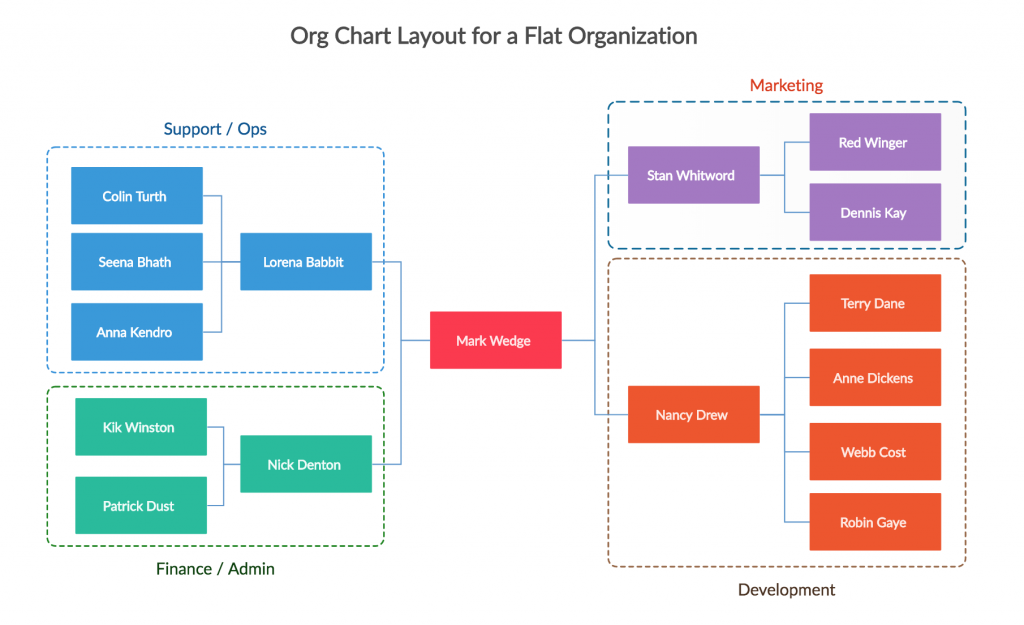In order to make change permanent the organization may benefit from sharing the results of the change effort with. It may involve a change in a companys structure strategy policies procedures technology or culture.

7 Types Of Organizational Structures For Companies
Weber proposed all of these elements of bureaucracy that serve as a foundation for determining an appropriate structure EXCEPT.

. With respect to managing change management should consider resistance to change as. 3 If organizational components are well aligned the organization will be more effective. Organization-level change A change that affects an entire organizational system or several of its units.
Change for the sake of change hurts your organization. All of the following conditions indicate that contemplated change should be delayed except. Organizational Change looks both at the process in which a company or any organization changes its operational methods technologies organizational structure whole structure or strategies as well as what effects these changes have on it.
Change does not take place in a vacuum. Senior leaders and their learning partners must keep three key areas in mind as they navigate any major change like. Higher-level change programs usually require.
And there is no likelihood of any slowing of it. Organizational growth revenues a growing client base and profit margins are important ingredients for success. When it comes to organizational change one of the biggest obstacles is resistance to change.
All changes will affect some aspects of a company but not all changes are transformational. Here are my six characteristics of healthy organizational change. The study of peoples behavior is _________ behavior.
11 the three critical elements of Nadler and Tushmans model for change 1The system is dynamic and therefore so is the organizational diagnosis. Chapter 6 Principles of Management. The specific need for the organizational change is real understood and meaningful to the change-recipients.
People resist change because change disrupts habits conflicts with certain personality types causes a fear of failure can have potentially negative impacts can result in a potential for loss of power and when done too frequently can exhaust employees. Organisational Change Essentials of Organizational Change. Less deterministic is the cognitive system of people with _______ levels of cognitive complexity.
Culture can be understood in terms of seven different culture dimensions depending on what is most emphasized within the organization. Planned change An intentional activity or set of intentional activities that are designed to create movement toward a specific goal or end. Organization-level change is a change that affects an entire organizational system or several of its units.
All of the following are positive aspects of control systems on organizational members EXCEPT. The Orientation of This Book. Worse is faux change.
As you look through this list of organizational levels consider what you believe your organization does bestand where you may lack focus. For example innovative cultures are flexible and adaptable and they experiment with new ideas while stable cultures are predictable rule-oriented and bureaucratic. All of the following statements about change are true EXCEPT.
The Pace Amount and Complexity of change only Continue to Rise with no signs of let up. All of the following are characteristics which describe learning organizations EXCEPT. Focus on a holistic perspective on change 3.
Minor modifications to existing tools or policies will influence but not completely redefine a business. The change is all round. 2 Congruence between components determines why the organization is performing at its current level.
The best way to foster strong organization change and commitment includes all of the following EXCEPT. Resistance to change should be eliminated. Intentionality The degree to which the change is intentionally designed or purposefully implemented.
Team development or teambuilding is one of the most common forms of a team change process. Organizational change usually happens in response to or as a result of external or internal pressures. Which of the following characteristics will most likely enable a business to meet contemporary competitive challenges.
An organization may resist changeB. Sets found in the same folder. ______ are at the top of the hierarchy and are responsible for the entire organization especially its strategic direction.
All of the following describe characteristics of organizational change EXCEPT. The organizations core values. Resistance to change is inevitableE.
Big changes on the other hand transform companies. Resistance to change should be eliminated. Strategic planning and implementation is perhaps the most common type of organization-level change.
Financial Stability Level 1 Healthy organizations have a focus on financial stability. Instill a broader perspective in employees connection to their work 2. You cant measure the success of your organization or any change simply by the numbers.
An organization may promote change. The change may be planned years in advance or may be forced on an organization because of a shift in the environment. They tend to be men between the ages of 25 and 40.
Thus change is also changing. Unfreezing moving and refreezing Kurt Lewins three-step mode of organizational change includes which of the following. Leadership capabilities and.
Which of the following issues regarding organizational change is frequently overlooked. A signal to carefully examine the decision to change. We have seen within last one decade that the speed of change has increased many folds.
Organizational change can be radical and swiftly alter the way an organization operates or it may be incremental and slow.

The 3 Different Levels Of Management Sprigghr

Mgt311 Organizational Development Complete Course Week 1 5 Organizational Development How To Plan

0 Comments